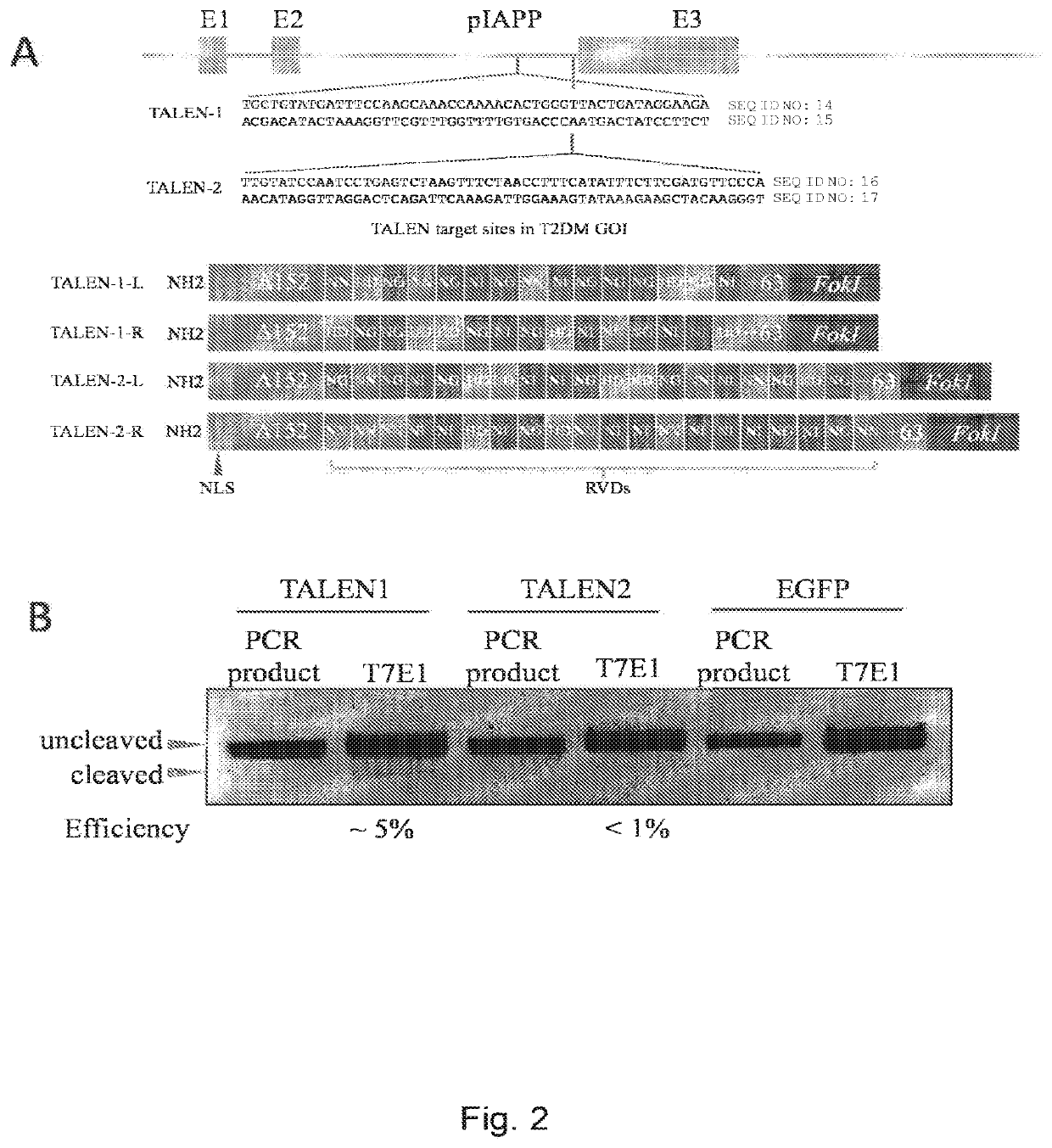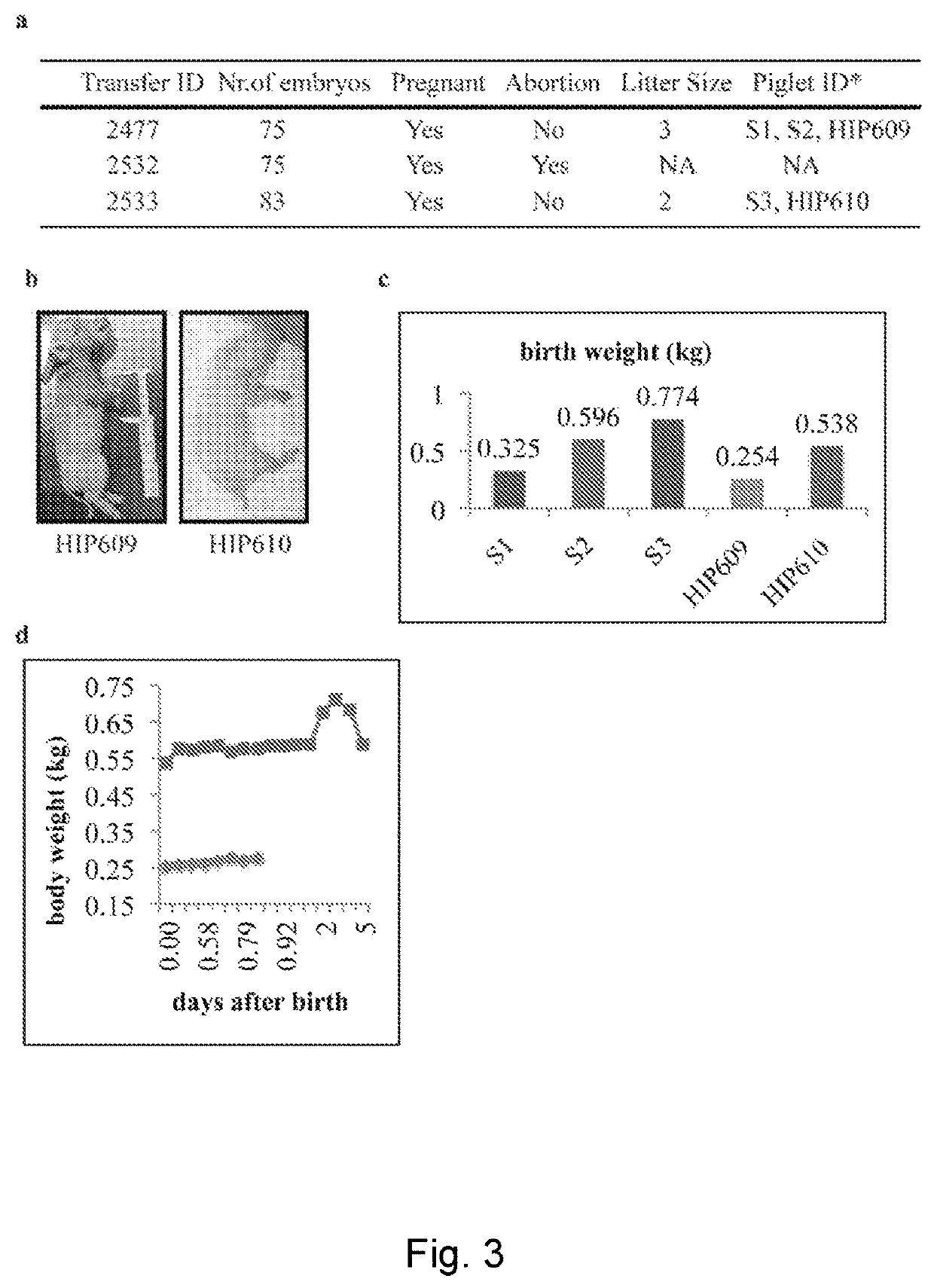Pig model for diabetes
a pig model and diabetes technology, applied in the field of transgenic pigs, can solve the problems of insufficient rodent hiapp models and inability to fully address the pathogenic process of t2dm
- Summary
- Abstract
- Description
- Claims
- Application Information
AI Technical Summary
Benefits of technology
Problems solved by technology
Method used
Image
Examples
example 1
n of the HIP Pigs
[0198]The human IAPP pigs (HIP pigs) comprise a mutated IAAP gene comprising the mutation S20G as described elsewhere herein. A HIP pig targeting construct (SEQ ID NO: 13) as illustrated in FIG. 1 was generated. The strategy combines complete pIAPP knockout with targeted hIAPP knockin (pIAPPKO; hIAPPKI) using pIAPP-TALENs together with the targeting construct. A pair of TALENs with cleaving efficiency of approximately 5%, measured by T7E1 assay (FIG. 2), created DNA double strand breaks in intron 2 of the pIAPP gene to enhance the targeting efficiency by homologous recombination (HR). The targeting construct was designed in a way that allows, upon homologous recombination, the endogenous pIAPP gene to be replaced by a transgene, in which the expression of hIAPP is regulated by the rat insulin 2 promoter (RIP2). The transgene also carries an antibiotic selection cassette which, after use, can be removed by Cre recombinase.
[0199]We transfected porcine primary fibrobla...
example 2
ization and Validation of T2DM in the HIP Pigs
[0201]Many abnormal phenotypes, such as blindness, inflammation, infection, and minor organ malformations, have been observed in the HIP pigs. Body weight and whole blood glucose have been monitored in the HIP pigs weekly in the first month, and biweekly thereafter. Some HIP pigs were gaining weight well while others did not thrive. Pigs that were losing weight and showing signs of suffering were euthanized. Blood glucose was monitored in the HIP pigs weekly for the first month and then biweekly. Fluctuating, but high, glucose levels were observed in all HIP pigs. After weaning, the blood glucose in the HIP pigs was getting more normal due the strict diet given every day (FIG. 4). Our data from the first months show that these HIP pigs have significantly higher glucagon and lower c-peptide levels than control pigs, suggesting that the genetic modification we have introduced in the pigs already had effects in the young pigs (FIG. 5). The ...
PUM
| Property | Measurement | Unit |
|---|---|---|
| weight | aaaaa | aaaaa |
| humidity | aaaaa | aaaaa |
| humidity | aaaaa | aaaaa |
Abstract
Description
Claims
Application Information
 Login to View More
Login to View More - R&D
- Intellectual Property
- Life Sciences
- Materials
- Tech Scout
- Unparalleled Data Quality
- Higher Quality Content
- 60% Fewer Hallucinations
Browse by: Latest US Patents, China's latest patents, Technical Efficacy Thesaurus, Application Domain, Technology Topic, Popular Technical Reports.
© 2025 PatSnap. All rights reserved.Legal|Privacy policy|Modern Slavery Act Transparency Statement|Sitemap|About US| Contact US: help@patsnap.com



